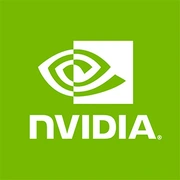NVIDIA GeForce GTX TITAN Z

NVIDIA GeForce GTX TITAN Z: A Legend of the Past in an Era of New Technologies
April 2025
Introduction
The NVIDIA GeForce GTX TITAN Z, released in 2014, became a symbol of an era when dual-GPU graphics cards were considered the pinnacle of engineering. Today, in 2025, this model evokes nostalgia among enthusiasts and interest from collectors. Despite its outdated technologies, the TITAN Z remains a significant milestone in the history of GPUs. In this article, we will examine its features through the lens of contemporary demands.
1. Architecture and Key Features
Architecture: Based on the Kepler GK110 (28 nm) with two GPUs on a single board. Each chip contains 2880 CUDA cores, totaling 5760 cores — an impressive number for 2014.
Unique Features: The TITAN Z was created before the era of RTX and DLSS, so it lacks ray tracing and AI upscaling. Unique to it is support for NVIDIA SLI to combine two cards (theoretically allowing for 4 GPUs), but this technology has been overtaken by more efficient solutions.
Manufacturing Process: 28 nm was the standard of its time, but today this process is considered archaic (modern cards use 5-7 nm).
2. Memory: Size and Bandwidth
Type and Size: 12 GB GDDR5 (6 GB per GPU) with a 384-bit bus. For 2014, this was revolutionary, but today even budget cards come equipped with 8–12 GB GDDR6.
Bandwidth: 336 GB/s per chip (672 GB/s combined). However, due to the division of memory between GPUs, the actual performance in games was lower.
Impact on Performance: In modern titles (e.g., Cyberpunk 2077: Phantom Liberty), 12 GB is suitable for medium settings at 1080p, but the lack of memory speed and bandwidth becomes a bottleneck at 4K.
3. Gaming Performance
Average FPS (Examples):
- The Witcher 3: Wild Hunt (1080p/Ultra): ~45–50 FPS (without mods).
- Red Dead Redemption 2 (1440p/Medium): ~30–35 FPS.
- Hogwarts Legacy (1080p/Low): ~25 FPS (due to lack of optimization for old architectures).
4K Gaming: Practically impossible — in Elden Ring (4K/Low) the card barely reaches 20 FPS.
Ray Tracing: Not supported — for comparison, even a budget RTX 4050 handles hybrid rendering.
4. Professional Tasks
CUDA and OpenCL: 5760 CUDA cores are theoretically useful in rendering (Blender, Maya), but modern NVIDIA drivers are poorly optimized for Kepler.
Video Editing: In DaVinci Resolve or Premiere Pro, the TITAN Z will fall behind even the GTX 1660 Super due to lack of AV1 hardware acceleration and VRAM limitations.
Scientific Calculations: Suitable for educational tasks (e.g., MATLAB), but for neural networks (TensorFlow/PyTorch) CUDA 7.5+ support is required, which is partially outdated.
5. Power Consumption and Heat Dissipation
TDP: 375 W — similar to a modern RTX 4090, but with drastically lower performance.
Cooling: The blower-style solution is loud and inefficient by 2025 standards. Modding with liquid cooling or installing it in a case with 6+ fans is recommended.
Cases: A minimum of a Mid-Tower with good ventilation. Due to its length (26.7 cm), check compatibility with compact builds.
6. Comparison with Competitors
Historical Competitors (2014):
- AMD Radeon R9 295X2 (2x Hawaii XT): Cheaper, but less stable in drivers.
- NVIDIA GTX 690 (2x Kepler GK104): Weaker, but more compact.
Modern Alternatives (2025):
- RTX 4060 Ti (16 GB): Twice as fast with a TDP of 160 W.
- AMD Radeon RX 7700 XT: Better energy efficiency and support for FSR 3.0.
7. Practical Tips
Power Supply: At least 800 W with an 80+ Gold certification. It's better to opt for models with separate 8-pin cables (2x8 pin).
Compatibility: PCIe 3.0 x16 works on modern motherboards, but avoid using it with AMD Ryzen 8000+ processors — there may be driver conflicts.
Drivers: Official support ended in 2021. For Windows 11, use modified drivers from the community (e.g., “NVCleanstall”).
8. Pros and Cons
Pros:
- Legendary status and unique design.
- High potential for retro gaming (DirectX 11 games).
- Support for four-monitor setups.
Cons:
- Outdated technologies (no DLSS, RTX, FidelityFX).
- High power consumption.
- Limited driver support.
9. Final Conclusion: Who Should Consider TITAN Z?
This graphics card is an artifact for:
- Collectors who appreciate the history of hardware.
- Retro PC enthusiasts assembling systems from the 2010s.
- Educational projects where modern performance is not required.
Why not consider it in 2025? Even a budget RTX 3050 (starting at $250) will outperform the TITAN Z in gaming and tasks. However, if you want to experience the “spirit of the era” — this is the perfect choice. New units are rare, but on auctions, prices can reach $400-$600 as a rarity.
Conclusion
The NVIDIA GeForce GTX TITAN Z is a reminder of a time when power was achieved through complex engineering compromises. Today, it lags behind even mid-range GPUs, but its charisma and historical role remain invaluable. As the saying goes, “old hardware doesn’t die, it becomes an exhibit.”
Basic
Memory Specifications
Theoretical Performance
Miscellaneous
Benchmarks
Compared to Other GPU
Share in social media
Or Link To Us
<a href="https://cputronic.com/en/gpu/nvidia-geforce-gtx-titan-z" target="_blank">NVIDIA GeForce GTX TITAN Z</a>